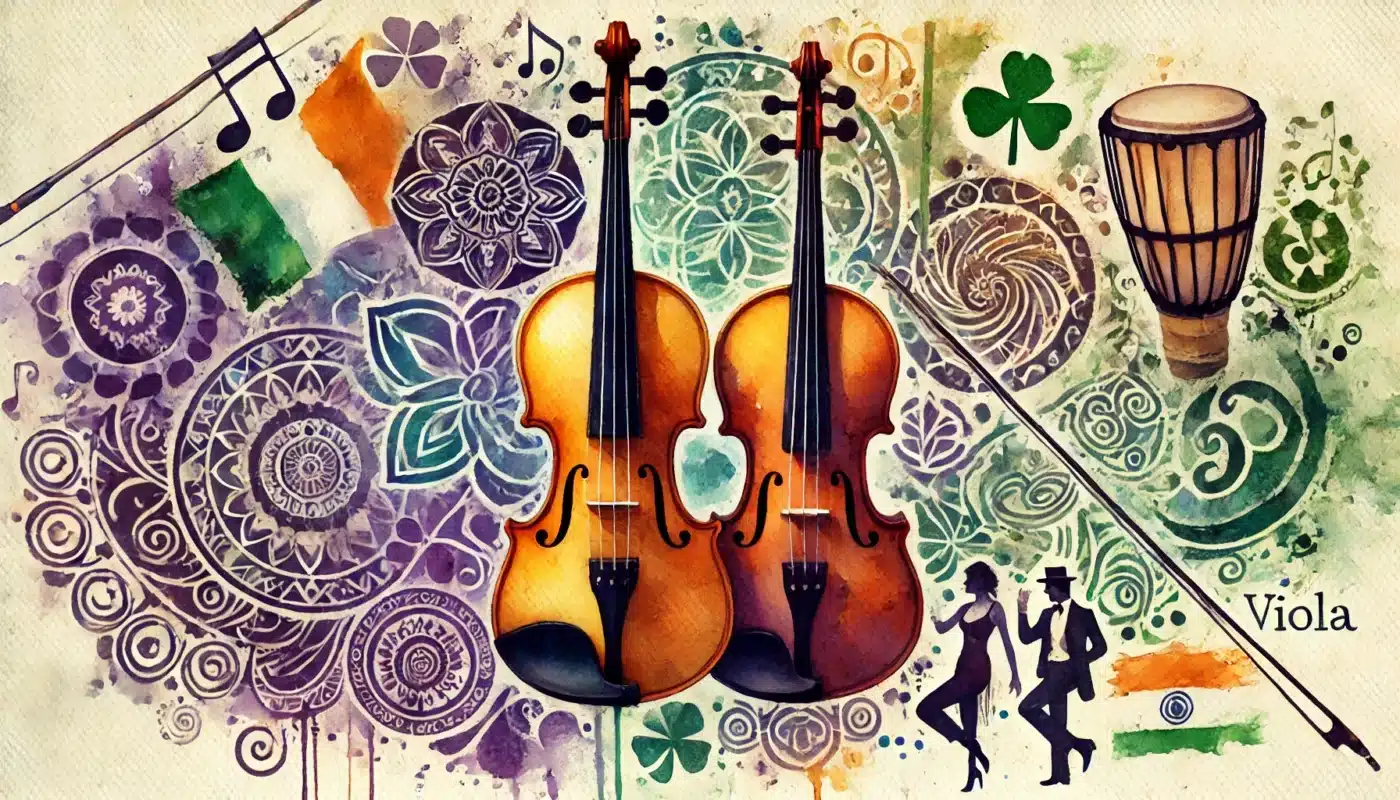Introduction
The violin and viola are not only staples of Western classical music; their versatility has allowed them to transcend cultural boundaries and thrive in music traditions all around the world.
From the folk tunes of Ireland to the passionate tangos of Argentina, these instruments have found a place in countless genres.
In this article, we explore how the violin and viola are used in a variety of cultural music traditions, showcasing their adaptability and global influence.
If you’re considering which instrument might be right for you, understanding how violins and violas fit into different musical traditions can be a great insight. For a more detailed comparison, check out our guide: Viola vs Violin: Which Instrument Is Right for You?
The Violin in World Music Traditions
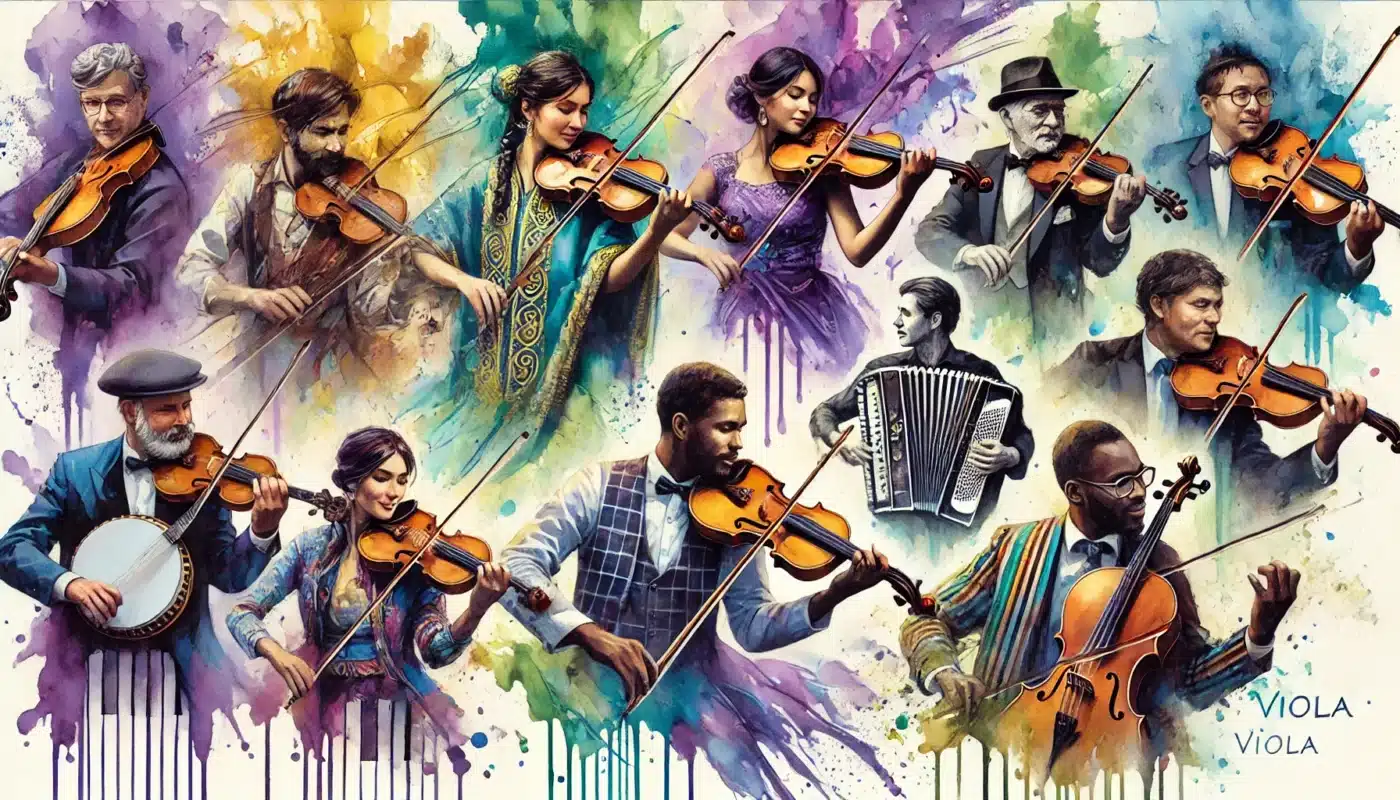
1. Irish and Scottish Folk Music
The violin, often called the fiddle in folk contexts, is a cornerstone of Irish and Scottish music. It’s known for its lively jigs, reels, and hornpipes, which require fast bowing techniques and intricate fingerwork.
- Characteristics: Folk fiddlers typically focus on creating rhythmic, dance-like melodies, with an emphasis on ornamentation and improvisation.
- Role in Music: The violin is usually at the forefront, leading dances and bringing a festive atmosphere to gatherings.
2. Indian Classical Music
In Indian classical music, the violin plays a prominent role, particularly in Carnatic (South Indian) traditions.
- Techniques: The violin is held differently in this tradition—resting on the player’s foot and shoulder to enable unique sliding techniques, called gamakas, which are essential in Indian music.
- Role in Ensembles: The violin often accompanies a vocalist or serves as the main instrument, with an emphasis on expressive phrasing and complex rhythmic patterns.
3. Argentine Tango
The violin is also an integral part of the tango orchestras in Argentina. It adds emotional weight to the sultry, dramatic nature of tango music.
- Role in Music: In tango, the violin’s role is often to provide lyrical melodies, adding an element of expressiveness and drama that complements the accordion and piano.
- Characteristics: Tango violinists employ a passionate and dynamic playing style, with sudden shifts in volume and pace that reflect the intensity of the dance.
4. Klezmer Music
In Klezmer, a traditional Jewish musical style, the violin acts as the main melodic instrument, capable of imitating the voice with its expressive slides and phrasing.
- Characteristics: Klezmer violinists use bending notes and vibrato to evoke emotional responses, mimicking the human voice in its laughter or tears.
- Role in Music: It’s often used to play upbeat dance tunes, as well as slower, mournful pieces that convey a range of emotions central to Jewish cultural celebrations.
The Viola’s Growing Role in World Music
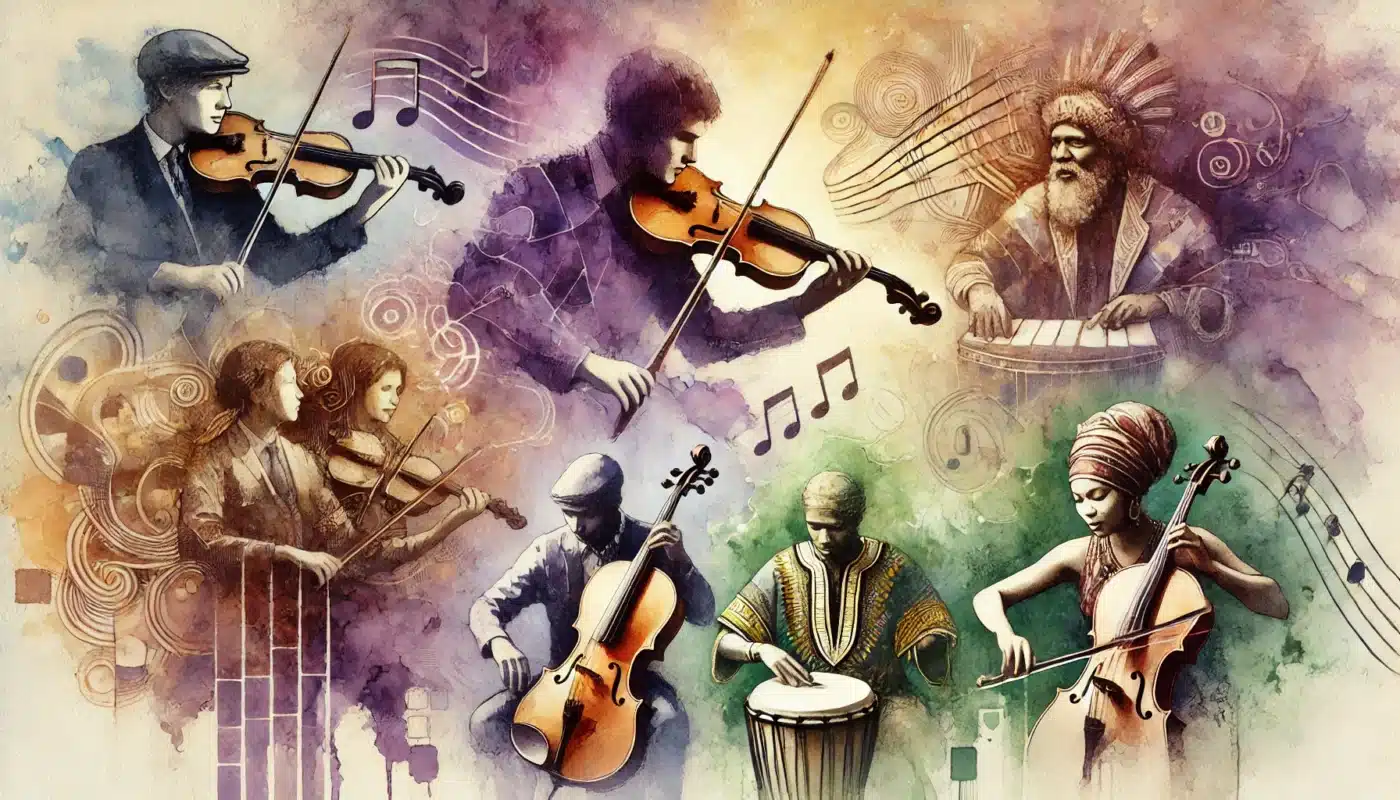
1. Contemporary and Experimental Music
The viola has gained popularity in contemporary and experimental music due to its warm tone and versatility.
- Characteristics: Composers and musicians value the viola’s ability to blend seamlessly while also providing rich, harmonic support.
- Role in Music: In experimental music, the viola is often used to explore new sounds, employing unconventional bowing, plucking, and even percussive techniques.
2. Folk Music
While the violin is more common in traditional folk music, the viola is increasingly finding its way into folk ensembles, especially for its ability to provide harmonic depth.
- Irish and Appalachian Folk: In some folk groups, violists adapt their playing to fit the style of fiddle music, adding lower harmonies that complement the higher fiddle parts.
- Role in Music: The viola’s warm resonance enriches the music, giving it a fuller sound, particularly when playing drones or rhythmic accompaniments.
3. African Fusion and Jazz
The viola has also made its way into African fusion and jazz ensembles.
- Role in Music: Jazz violists often experiment with the instrument’s unique tone, using improvisation to create new and unexpected harmonies that wouldn’t be possible with other string instruments.
- Characteristics: In these settings, the viola’s darker tone adds an element of surprise and richness, blending well with traditional jazz instruments while still offering something distinct.
Shared Roles in Cultural Settings
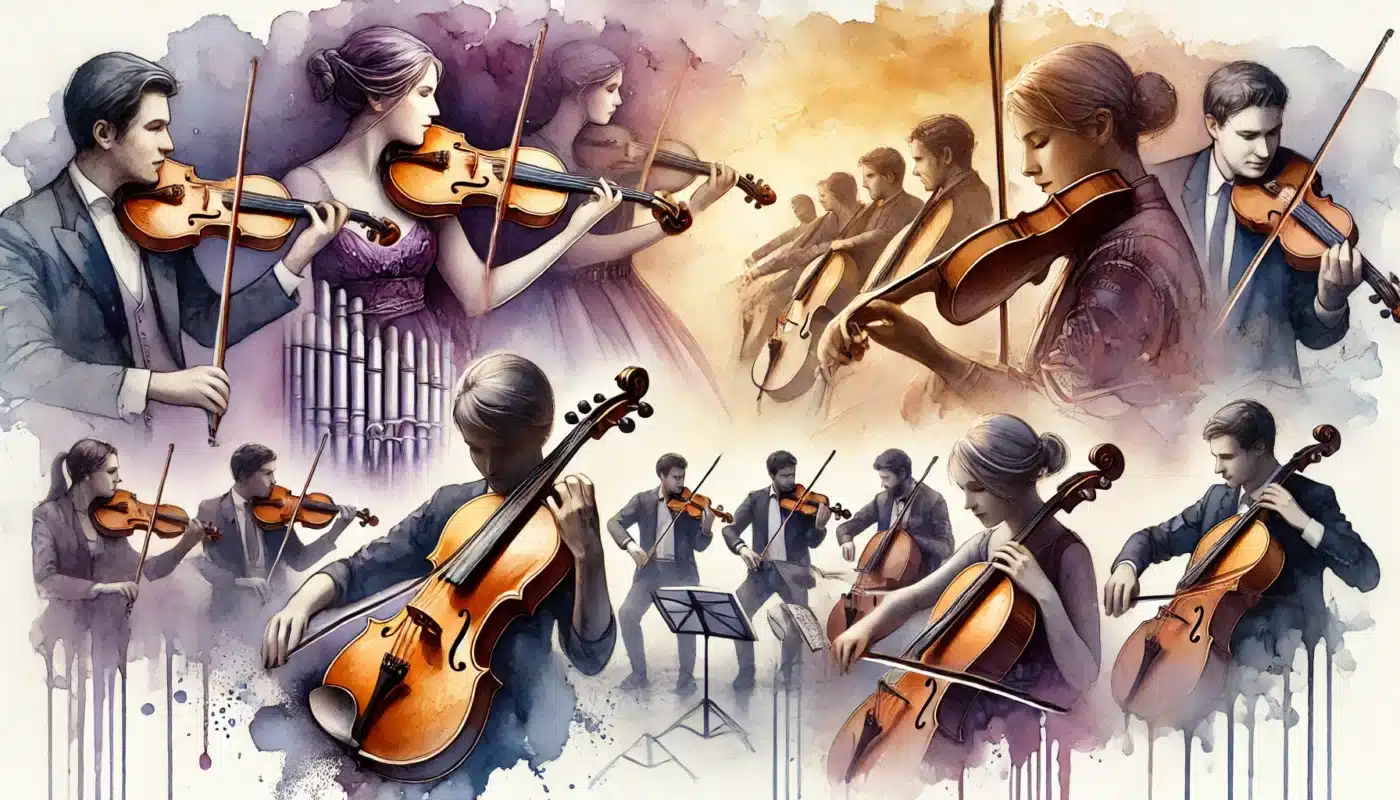
1. String Quartets and Fusion Bands
The string quartet format, which includes both violins and viola, has become popular worldwide as an adaptable ensemble for both classical and modern fusion music.
- Fusion Bands: String quartets have been embraced in genres like rock and pop, with both the violin and viola contributing to the harmonic and melodic structure of the songs.
- Characteristics: The violin often carries the main tune, while the viola provides a supportive layer, enhancing the depth and character of the music.
2. Film and Theatre Music Across Cultures
The violin and viola both play key roles in creating emotive music for films and theatre in different cultural contexts.
- Indian Cinema: Violins are heavily featured in Bollywood soundtracks, often used to highlight moments of romance or drama.
- Western Films: Both instruments are used to create a wide emotional palette, with violins delivering soaring, dramatic lines and violas providing tension and depth in more poignant scenes.
How Cultural Traditions Influence Instrument Choice
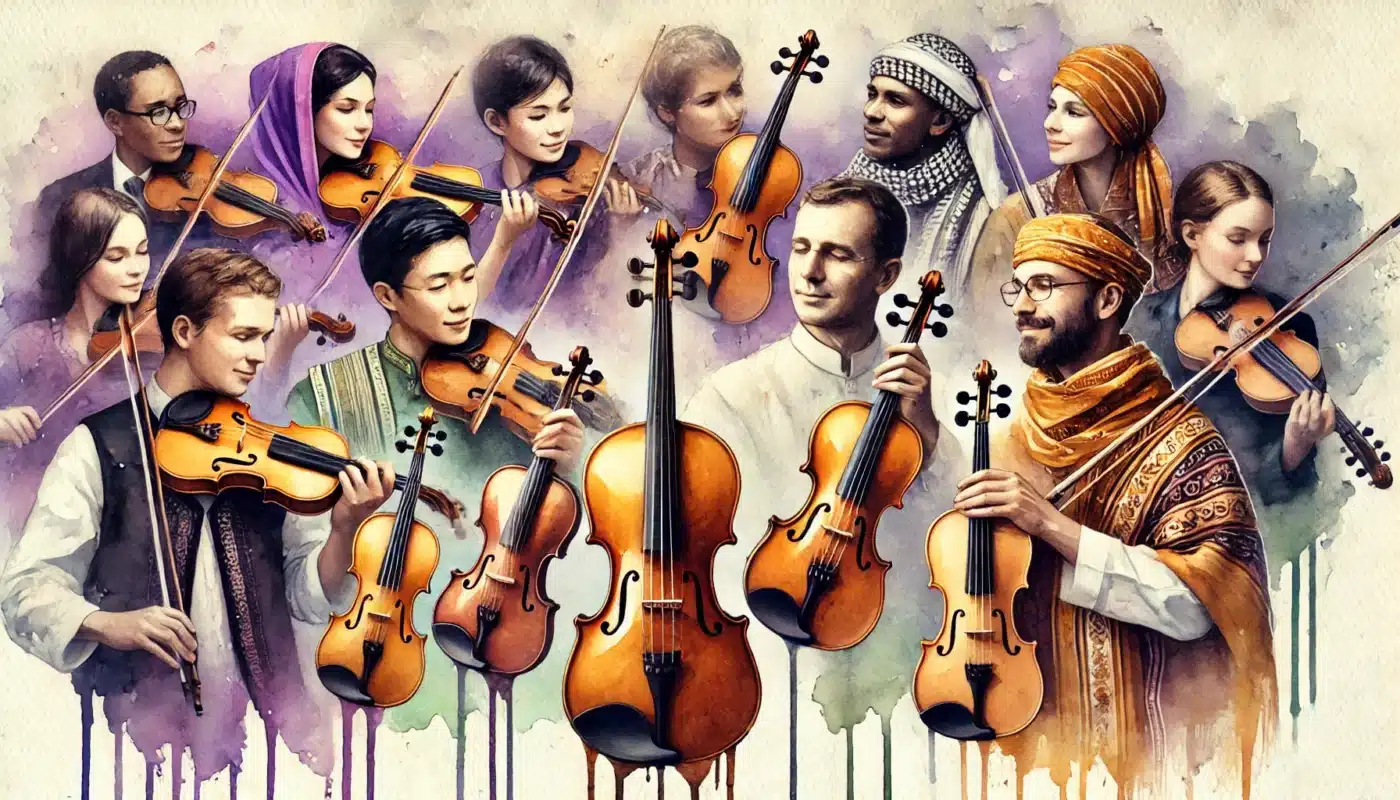
The versatility of the violin and viola means they have found a home in a wide variety of musical traditions across the globe. Cultural preferences often influence the choice of instrument:
- Violin: Typically chosen for melodic roles due to its high pitch and ability to project, making it ideal for leading melodies in folk, classical, and popular music.
- Viola: Often selected for those looking for a deeper, harmonic sound that adds richness to ensemble settings, or for those interested in more experimental musical contexts.
Conclusion
The violin and viola have transcended their classical roots to become vital parts of various musical traditions across the world. From the lively fiddling of Irish folk to the soulful sounds of Indian classical music, these instruments showcase their adaptability and enduring appeal. Whether leading a melody or providing a harmonic backdrop, the violin and viola each have their own special place in the global music landscape.
No matter which instrument resonates with you, knowing how each fits into different cultures can be both inspiring and insightful, helping you make the right choice for your musical journey.

